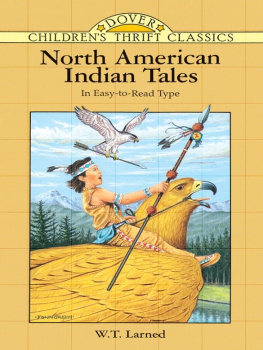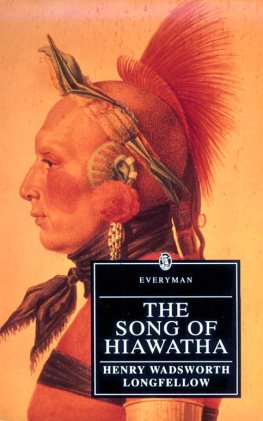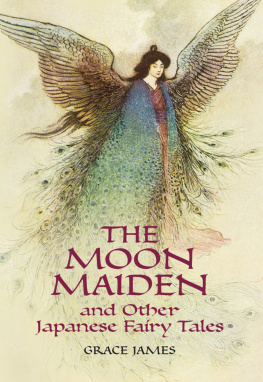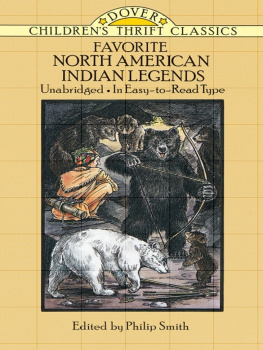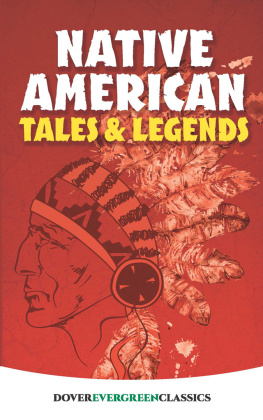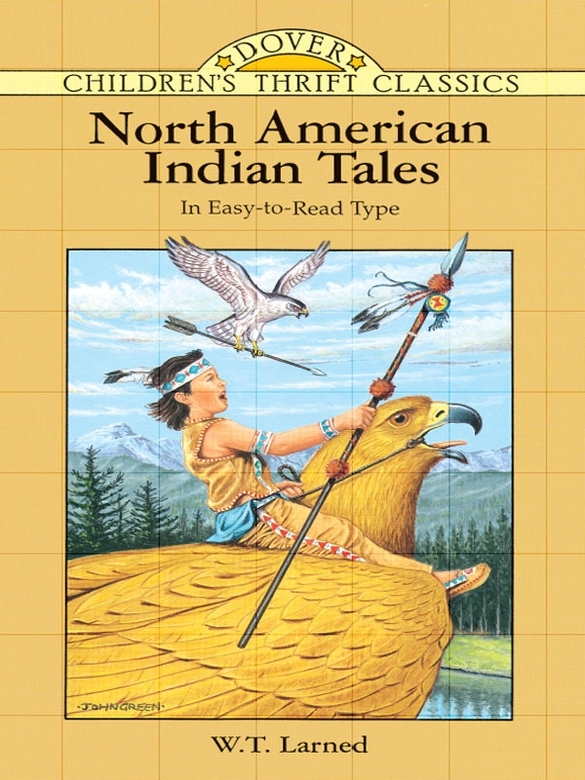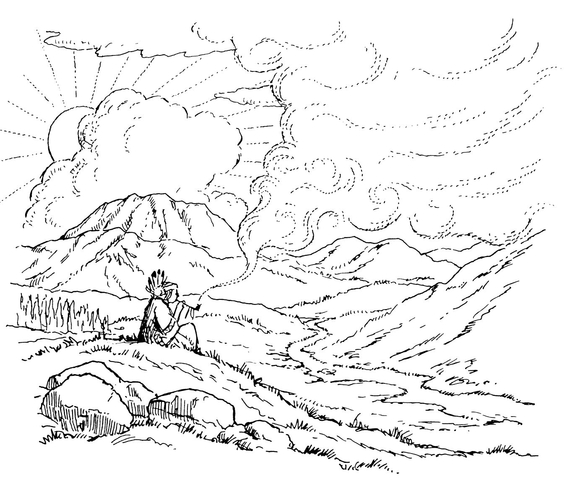Iagoo, the Story-Teller
T HERE NEVER was anyone so wise and knowing as old lagoo. There never was an Indian who saw and heard so much. He knew the secrets of the woods and fields, and understood the language of birds and beasts. All his life long he had lived out of doors, wandering far in the forest where the wild deer hide, or skimming the waters of the lake in his birch-bark canoe.
Besides the things he had learned for himself, lagoo knew much more. He knew the fairy tales and the wonder stories told him by his grandfather, who had heard them from his grandfather, and so on, away back to the time when the world was young and strange, and there was magic in almost everything.
lagoo was a great favorite with the children. No one knew better where to find the beautiful, colored shells which he strung into necklaces for the little girls. No one could teach them so well just where to look for the grasses which their nimble fingers wove into baskets. For the boys he made bows and arrowsbows from the ash-tree, that would bend far back without breaking, and arrows, strong and straight, from the sturdy oak.
But most of all, lagoo won the childrens hearts with his stories. Where did the robin get his red breast? How did fire find its way into the wood, so that an Indian can get it out again by rubbing two sticks together? Why was Coyote, the prairie wolf, so much cleverer than the other animals; and why was he always looking behind him when he ran? It was old lagoo who could tell you where and why.
Now, winter was the time for story-telling. When the snow lay deep on the ground, the North Wind came howling from his home in the Land of Ice, and the cold moon shone from the frosty sky, it was then that the Indians gathered in the wigwam. It was then that lagoo sat by the fire of blazing logs, and the little boys and girls gathered around him.
Whoo, whoo! wailed the North Wind. The sparks leapt up, and lagoo laid another log on the fire. Whoo, whoo! What a mischievous old fellow was this North Wind! One could almost see himhis flowing hair all hung with icicles. If the wigwam were not so strong he would blow it down, and if the fire were not so bright he would put it out. But the wigwam was made on purpose, for just such a time as this; and the forest nearby had logs to last forever. So the North Wind could only gnash his teeth, and say, Whoo, whoo!
One little girl, more timid than the rest, would draw nearer and put her hand on the old mans arm. 0, lagoo, she said, Just listen! Do you think he can hurt us?
Have no fear, answered lagoo. The North Wind can do no harm to anyone who is brave and cheerful. He blusters, and makes a lot of noise; but at heart he is really a big coward, and the fire will soon frighten him away. Suppose I tell you a story about it.
And the story lagoo told we shall now tell to you, the story of how Shin-ge-bis fooled the North Wind.
Shin-ge-bis Fools the North Wind
L ONG, LONG ago, in the time when only a few people lived upon the earth, there dwelt in the North a tribe of fishermen. Now, the best fish were to be found in the summer season, far up in the frozen places where no one could live in the winter at all. For the King of this Land of Ice was a fierce old man called Ka-bib-on-okka by the Indiansmeaning in our language, the North Wind.
Though the Land of Ice stretched across the top of the world for thousands and thousands of miles, Ka-bib-on-okka was not satisfied. If he could have had his way there would have been no grass or green trees anywhere; all the world would have been white from one years end to another, all the rivers frozen tight, and all the country covered with snow and ice.
Luckily there was a limit to his power. Strong and fierce as he was, he was no match at all for Sha-won-dasee, the South Wind, whose home was in the pleasant land of the sunflower. Where Sha-won-dasee dwelt it was always summer. When he breathed upon the land, violets appeared in the woods, the wild rose bloomed on the yellow prairie, and the cooing dove called musically to his mate. It was he who caused the melons to grow, and the purple grapes; it was he whose warm breath ripened the corn in the fields, clothed the forests in green, and made the earth all glad and beautiful. Then, as the summer days grew shorter in the North, Sha-won-dasee would climb to the top of a hill, fill his great pipe, and sit theredreaming and smoking. Hour after hour he sat and smoked; and the smoke, rising in the form of a vapor, filled the air with a soft haze until the hills and lakes seemed like the hills and lakes of dreamland. Not a breath of wind, not a cloud in the sky; a great peace and stillness over all. Nowhere else in the world was there anything so wonderful. It was Indian Summer.
Hour after hour he sat and smoked.
Now it was that the fishermen who set their nets in the North worked hard and fast, knowing the time was at hand when the South Wind would fall asleep, and fierce old Ka-bib-on-okka would swoop down upon them and drive them away. Sure enough! One morning a thin film of ice covered the water where they set their nets; a heavy frost sparkled in the sun on the bark roof of their huts.
That was sufficient warning. The ice grew thicker, the snow fell in big, feathery flakes. Coyote, the prairie wolf, trotted by in his shaggy white winter coat. Already they could hear a muttering and a moaning in the distance.
Ka-bib-on-okka is coming! cried the fishermen. Ka-bib-on-okka will soon be here. It is time for us to go.
But Shin-ge-bis, the diver, only laughed.
Shin-ge-bis was always laughing. He laughed when he caught a big fish, and he laughed when he caught none at all. Nothing could dampen his spirits.
The fishing is still good, he said to his comrades. I can cut a hole in the ice, and fish with a line instead of a net. What do I care for old Ka-bib-on-okka?
They looked at him with amazement. It was true that Shin-ge-bis had certain magic powers, and could change himself into a duck. They had seen him do it; and that is why he came to be called the diver. But how would this enable him to brave the anger of the terrible North Wind?
You had better come with us, they said. Ka-bib-on-okka is much stronger than you. The biggest trees of the forest bend before his wrath. The swiftest river that runs freezes at his touch. Unless you can turn yourself into a bear, or a fish, you will have no chance at all.
But Shin-ge-bis only laughed the louder.
My fur coat lent me by Brother Beaver and my mittens borrowed from Cousin Muskrat will protect me in the daytime, he said, and inside my wigwam is a pile of big logs. Let Ka-bib-on-okka come in by my fire if he dares.
So the fishermen took their leave rather sadly; for the laughing Shin-ge-bis was a favorite with them, and, the truth is, they never expected to see him again.
When they were gone, Shin-ge-bis set about his work in his own way. First of all he made sure that he had plenty of dry bark and twigs and pine-needles, to make the fire blaze up when he returned to his wigwam in the evening. The snow by this time was pretty deep, but it froze so hard on top that the sun did not melt it, and he could walk on the surface without sinking in at all. As for fish, he well knew how to catch them through the holes he made in the ice; and at night he would go tramping home, trailing a long string of them behind him, and singing a song he had made up himself:

